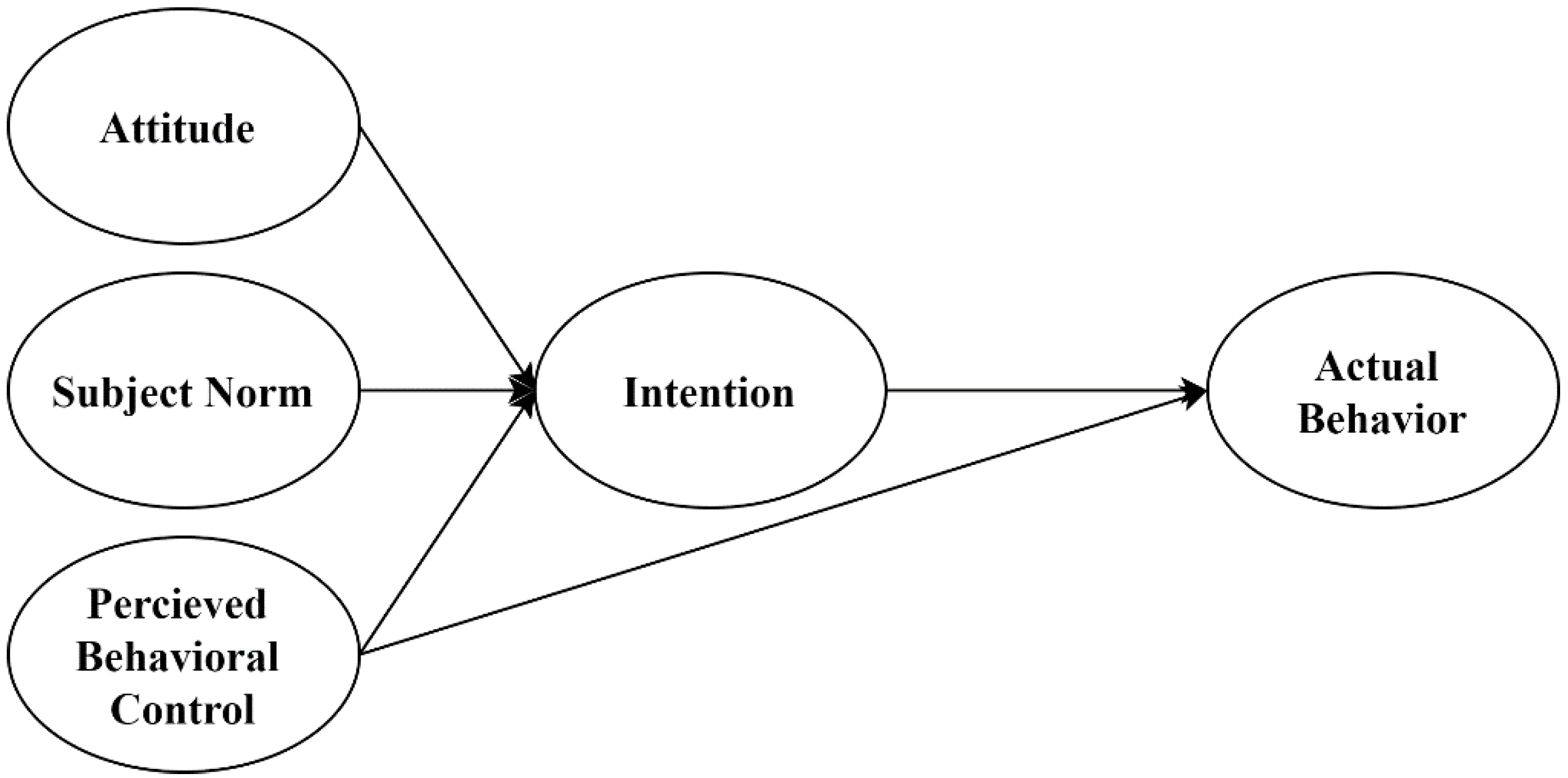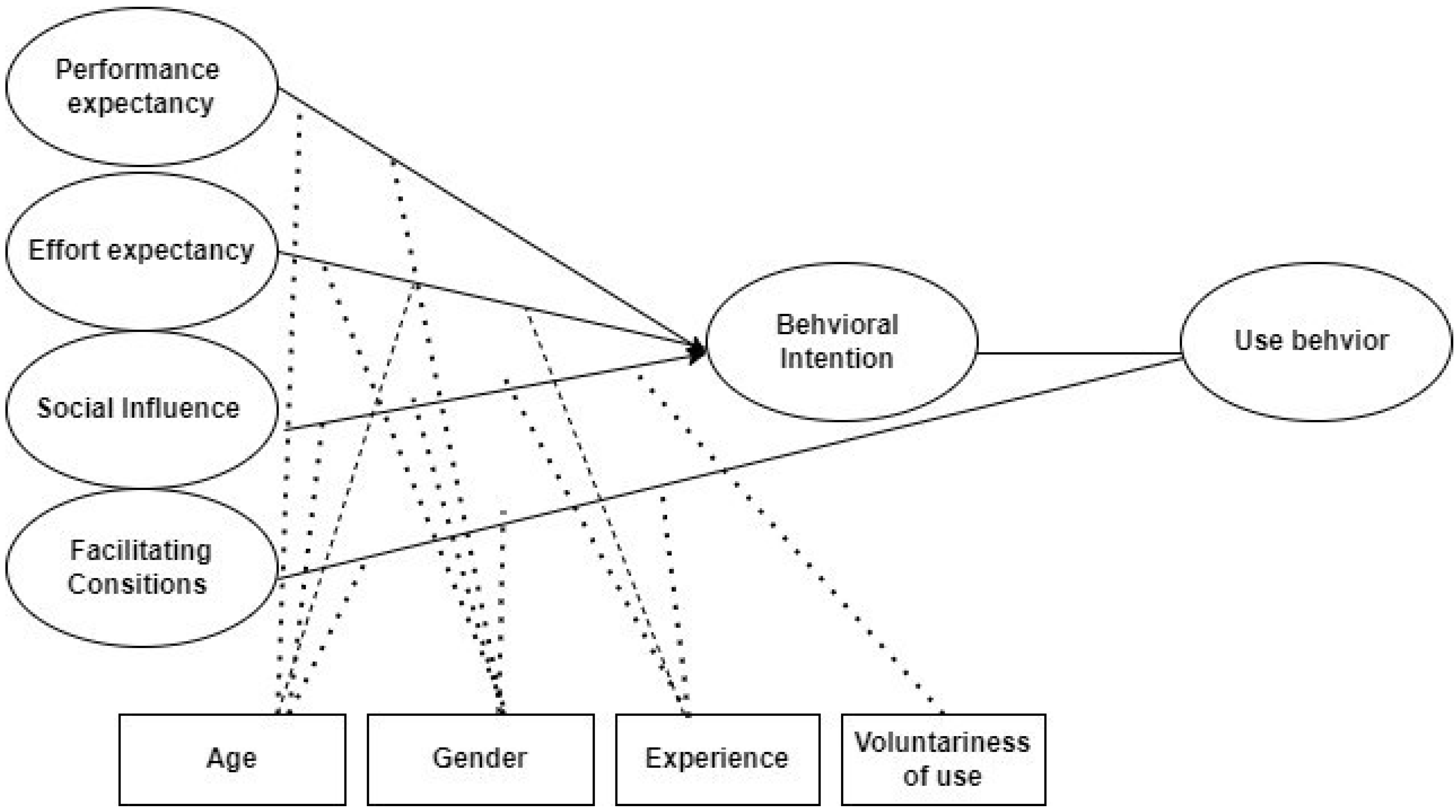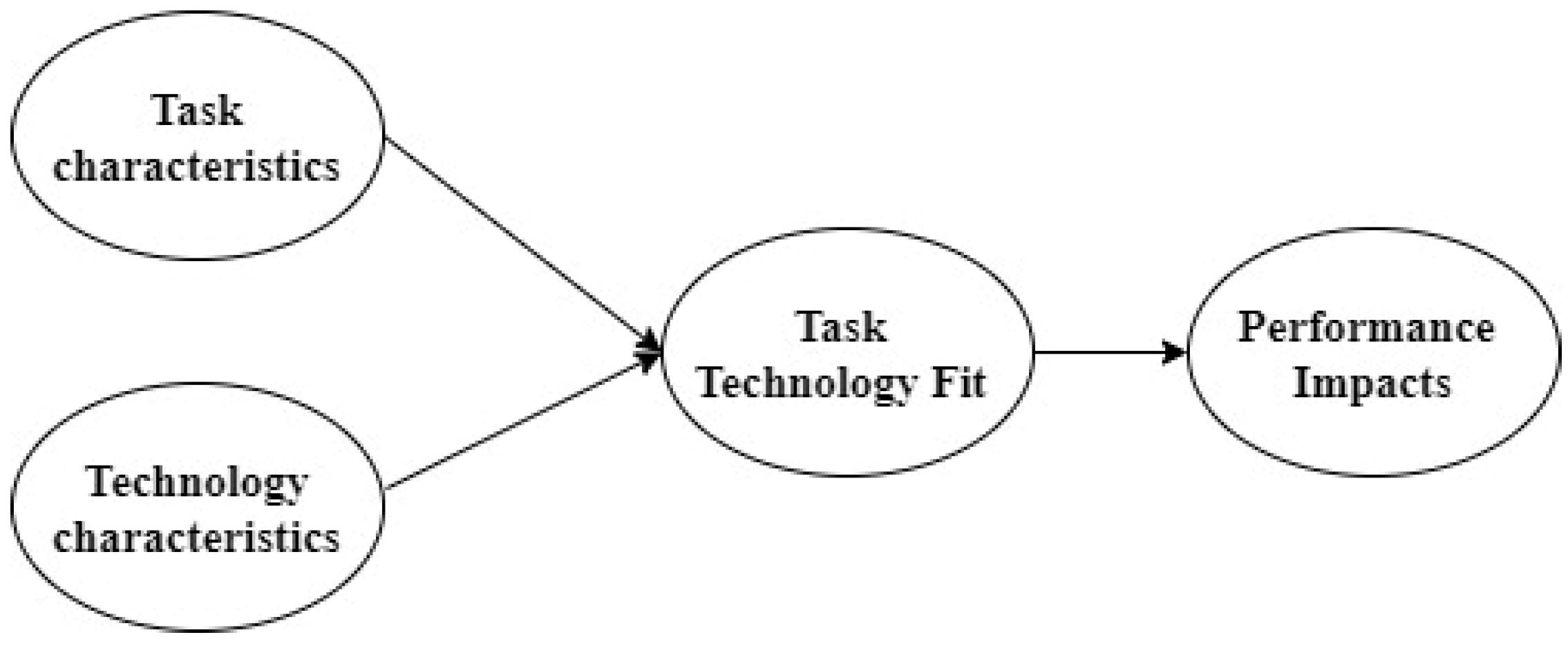
| Version | Summary | Created by | Modification | Content Size | Created at | Operation |
|---|---|---|---|---|---|---|
| 1 | Zeinab Zaremohzzabieh | -- | 1533 | 2022-09-17 04:15:35 | | | |
| 2 | Lindsay Dong | + 5 word(s) | 1538 | 2022-09-19 04:46:45 | | |
Video Upload Options
Due to the rapid growth of Massive Online Open Courses (MOOCs), higher educational institutions across the world are investing heavily in MOOCs to support their traditional teaching, their students’ learning experience, and their performance. User’s perception (performance expectancy (PE), effort expectancy (EE), attitude (ATT), task characteristics (TAC), and technology characteristics (TEC)) can positively influence BI’s willingness to use MOOCs.
1. Introduction
Theory of Planned Behavior (TPB)

The Unified Theory of Acceptance and Use of Technology (UTAUT)

Task-Technology Fit (TTF)

2. Factors in MOOCs Adoption in Higher Education
The MASEM approach is a method for analyzing quantitative data. It was used to incorporate the UTAUT, TTF, and TPB, in terms of their abilities, to investigate MOOCs’ adoption in HE.
It was discovered that PE and EE have substantial effects on BI, which is consistent with earlier UTAUT bodies of research [19][20]. However, this is inconsistent with an earlier report, which indicates that PE and EE have a non-significant effect on BI [21]. More precisely, this established that PE is involved in the formation of BI (H1). This means that users will be more receptive to MOOCs if they believe that technology could enhance teaching and learning. It was also discovered that EE has a role in explaining BI in the context of MOOCs (H2). This implies that the easier it is for a MOOC service to learn and perform MOOCs-related tasks, the greater the proclivity to engage in the technology. In a similar way, this MASEM analysis has established that ATT is a critical variable for BI reinforcement (H6). This concurs with a previous study on university students’ intentions towards the usage of a cloud computing classroom, e.g., [20]. As a result, if an individual had a positive ATT about using MOOCs platforms, a high degree of adoption intention is formed. These MASEM findings demonstrate that, while analyzing the factors affecting MOOC users’ uptake, the UTAUT-based technology perceptions must not be considered in isolation but, rather, have to also take into account the impact of the TTF. Additionally, the findings indicated that TAC and TEC were both significant predictors of TTF, with technology attributes having a greater effect [22][23].
It is possible that the effect of SN, within a given culture, differs from country to country, rendering the effect of SN on intention to use MOOCs contextually different. The finding might also reflect learners’ and educators’ uncertainty regarding the availability of various software or hardware conditions that enable them to use MOOCs. Furthermore, two new pathways emerged from the analysis: namely, the TAC and TEC. These two had direct effects on the BI to continue to use MOOCs. It is proposed that the nature of the tasks performed by the users will dictate whether MOOCs are beneficial. D’Ambra [24], Dishaw and Strong [18], as well as Koo [25] discovered strong associations between TAC and technology use. The variable TAC was chosen as a factor that would potentially influence consumers’ utilization of MOOCs, based on the results of the MASEM analysis. Additionally, this established a positive relationship between TEC and user’s utilization of MOOCs. TEC reflects the characteristics of MOOCs that are relevant for task completion. TEC has been shown to influence a system’s usefulness, ease of learning, accuracy, adaptability, and dependability [26]. Integrating TEC with task characteristics can aid in determining the technology’s best fit for the activity. D’Ambra [24], Hollingsworth [27], as well as Koo [25] have discovered that substantial correlations exist between TEC and technology adoption.
The moderator analysis supported the variance effects of the integrated framework’s constructs on the actual MOOCs usage. The analysis of the type of sample size—acting as a moderator—offers insight into the effect sizes and resultant findings. Age was identified as a significant moderating role in a user’s decision to use ICT [11][14]. Despite being the primary predictor across all age brackets, the SI and ATT appeared to have greater effects on youths than on adults. The other predictors exhibited an opposite pattern. Gender has been extensively researched as a key demographic factor influencing ICT adoption [11][14]. Additionally, the findings revealed that ATT is more predictive of females than of males. Findings corroborate prior research on the impact of age and gender on technology acceptance [28][29].
References
- Santandreu Calonge, D.; Aman Shah, M. MOOCs, Graduate Skills Gaps, and Employability: A Qualitative Systematic Review of the Literature. Int. Rev. Res. Open Distrib. Learn. IRRODL 2016, 17, 67–90.
- Tirthali, D. Are MOOCs Sustainable? In From Books to MOOCs; Portland Press Limited: London, UK, 2016; pp. 115–123.
- Koukis, N.; Jimoyiannis, A. MOOCS for Teacher Professional Development: Exploring Teachers’ Perceptions and Achievements. Interact. Technol. Smart Educ. 2019, 16, 74–91.
- Tao, D.; Fu, P.; Wang, Y.; Zhang, T.; Qu, X. Key Characteristics in Designing Massive Open Online Courses (MOOCs) for User Acceptance: An Application of the Extended Technology Acceptance Model. Interact. Learn. Environ. 2022, 30, 882–895.
- Ajzen, I. The Theory of Planned Behavior. Organ. Behav. Hum. Decis. Process. 1991, 50, 179–211.
- Goodhue, D.L. Understanding User Evaluations of Information Systems. Manag. Sci. 1995, 41, 1827–1844.
- Junglas, I.; Abraham, C.; Watson, R.T. Task-Technology Fit for Mobile Locatable Information Systems. Decis. Support Syst. 2008, 45, 1046–1057.
- Li, Y.; Zhao, M. A Study on the Influencing Factors of Continued Intention to Use MOOCs: UTAUT Model and CCC Moderating Effect. Front. Psychol. 2021, 12, 528259.
- Alyoussef, I.Y. Massive Open Online Course (MOOCs) Acceptance: The Role of Task-Technology Fit (TTF) for Higher Education Sustainability. Sustainability 2021, 13, 7374.
- Ajzen, I.; Fishbein, M. Understanding Attitudes and Predicting Social Behavior; Prentice-Hall: Englewood-Cliffs, NJ, USA, 1980.
- Venkatesh, V.; Morris, M.G.; Davis, G.B.; Davis, F.D. User Acceptance of Information Technology: Toward a Unified View. MIS Q. 2003, 27, 425–478.
- Wang, Y.; Dong, C.; Zhang, X. Improving MOOC Learning Performance in China: An Analysis of Factors from the TAM and TPB. Comput. Appl. Eng. Educ. 2020, 28, 1421–1433.
- Haron, H.; Hussin, S.; Yusof, A.R.M.; Samad, H.; Yusof, H. Implementation of the UTAUT Model to Understand the Technology Adoption of MOOC at Public Universities. In Proceedings of the IOP Conference Series: Materials Science and Engineering, Selangor, Malaysia, 25–26 June 2020; IOP Publishing: Bristol, UK, 2021; Volume 1062, pp. 1–8.
- Venkatesh, V.; Thong, J.Y.; Xu, X. Consumer Acceptance and Use of Information Technology: Extending the Unified Theory of Acceptance and Use of Technology. MIS Q. 2012, 36, 157–178.
- Aljukhadar, M.; Senecal, S.; Nantel, J. Is More Always Better? Investigating the Task-Technology Fit Theory in an Online User Context. Inf. Manag. 2014, 51, 391–397.
- Goodhue, D.L.; Thompson, R.L. Task-Technology Fit and Individual Performance. MIS Q. 1995, 19, 213–236.
- Wu, B.; Chen, X. Continuance Intention to Use MOOCs: Integrating the Technology Acceptance Model (TAM) and Task Technology Fit (TTF) Model. Comput. Hum. Behav. 2017, 67, 221–232.
- Dishaw, M.T.; Strong, D.M. Extending the Technology Acceptance Model with Task-Technology Fit Constructs. Inf. Manag. 1999, 36, 9–21.
- Chaveesuk, S.; Khalid, B.; Bsoul-Kopowska, M.; Rostańska, E.; Chaiyasoonthorn, W. Comparative Analysis of Variables That Influence Behavioral Intention to Use MOOCs. PLoS ONE 2022, 17, e0262037.
- Wang, H.; Tao, D.; Yu, N.; Qu, X. Understanding Consumer Acceptance of Healthcare Wearable Devices: An Integrated Model of UTAUT and TTF. Int. J. Med. Inform. 2020, 139, 104156.
- Khalid, B.; Chaveesuk, S.; Chaiyasoonthorn, W. MOOCs Adoption in Higher Education: A Management Perspective. Pol. J. Manag. Stud. 2021, 23, 239–256.
- Rahi, S.; Khan, M.M.; Alghizzawi, M. Extension of Technology Continuance Theory (TCT) with Task-Technology Fit (TTF) in the Context of Internet Banking User Continuance Intention. Int. J. Qual. Reliab. 2021, 38, 986–1004.
- Fu, J.; Shang, R.-A.; Jeyaraj, A.; Sun, Y.; Hu, F. Interaction between Task Characteristics and Technology Affordances: Task-Technology Fit and Enterprise Social Media Usage. J. Enterp. Inf. Manag. 2020, 33, 1–22.
- D’Ambra, J.; Wilson, C.S.; Akter, S. Application of the Task-Technology Fit Model to Structure and Evaluate the Adoption of E-books by Academics. J. Am. Soc. Inf. Sci. Technol. 2013, 64, 48–64.
- Koo, C.; Wati, Y.; Jung, J.J. Examination of How Social Aspects Moderate the Relationship between Task Characteristics and Usage of Social Communication Technologies (SCTs) in Organizations. Int. J. Inf. Manag. 2011, 31, 445–459.
- DeLone, W.H.; McLean, E.R. Information Systems Success: The Quest for the Dependent Variable. Inf. Syst. Res 1992, 3, 60–95.
- Hollingsworth, C.L. An Examination of Fit and the Use of Mobile Devices for Performing Tasks. Ph.D. Thesis, Kennesaw State University, Kennesaw, GA, USA, 2015.
- Dutot, V.; Bhatiasevi, V.; Bellallahom, N. Applying the Technology Acceptance Model in a Three-Countries Study of Smartwatch Adoption. J. High Technol. Manag. Res. 2019, 30, 1–14.
- Hauk, N.; Hüffmeier, J.; Krumm, S. Ready to Be a Silver Surfer? A Meta-Analysis on the Relationship between Chronological Age and Technology Acceptance. Comput. Hum. Behav. 2018, 84, 304–319.




